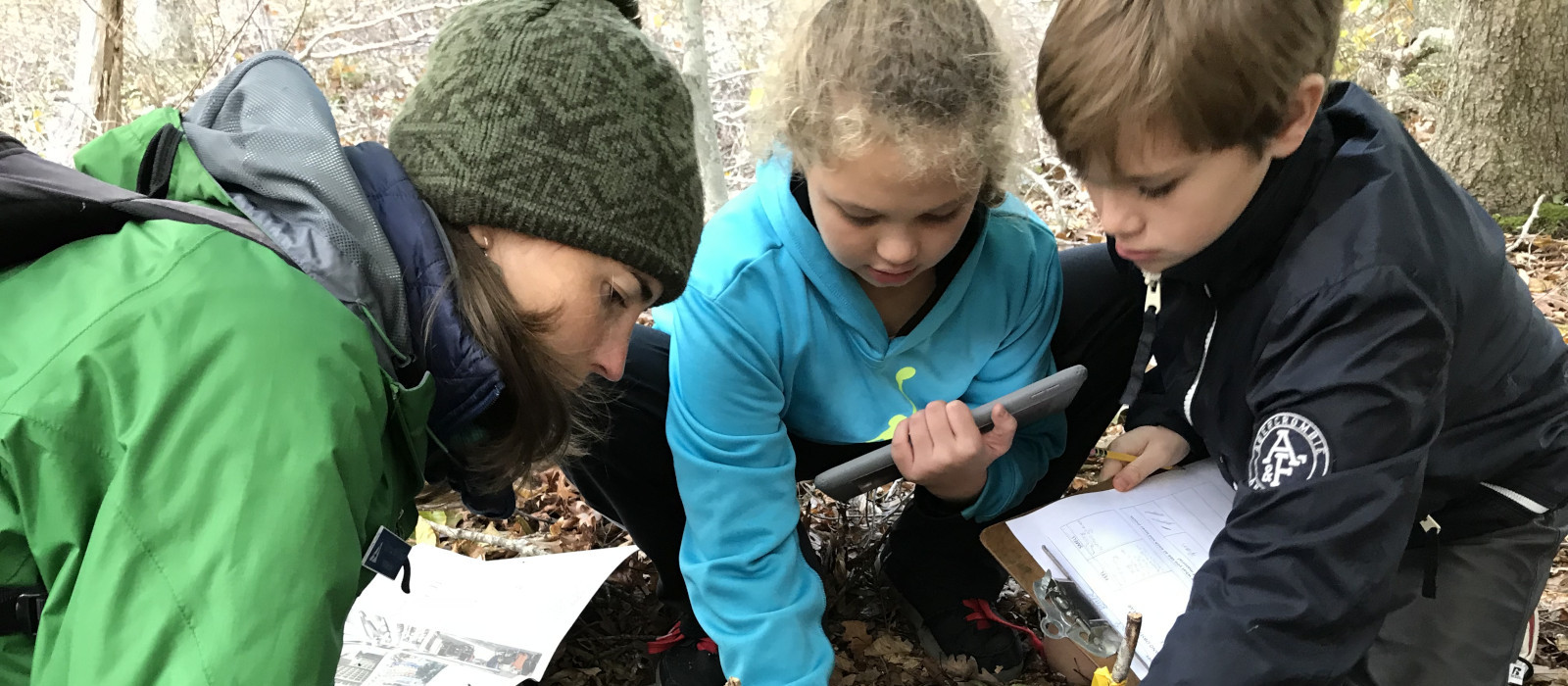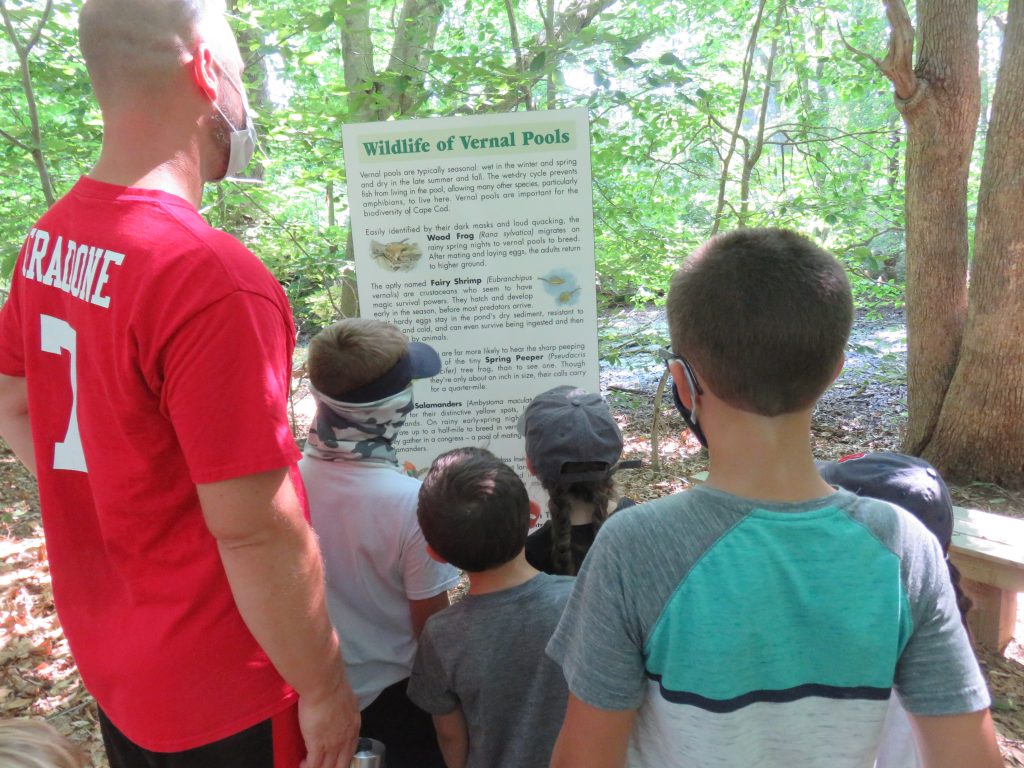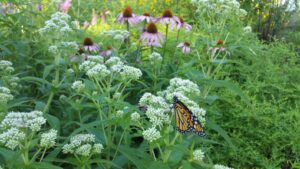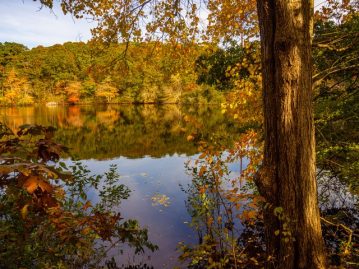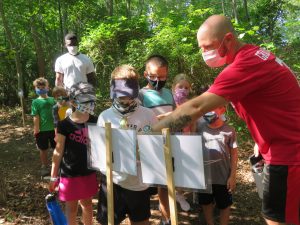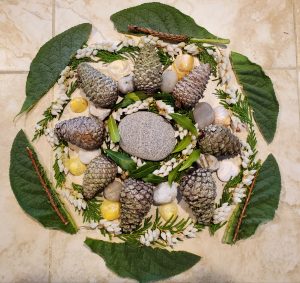How do you identify a tree? (grades 3-5)
Watch our instructional video on Tree Identification HERE!
What you will need:
- Tape measure
- Tree identification sheets and detective worksheets*
- Data form* (on clip board) and pencil & crayon
- i-pad or camera
- small zip lock bags and index cards (to collect samples and notes)
Click to download the following documents:
On a nature walk, find a tree and record the following information on your data form:
- describe bark (reference worksheet)
- estimate diameter with tape measure
- estimate height (measure 4 feet on tree, step back and estimate how times the 4 feet it takes to reach the top)
- describe leaves (reference worksheet)
- note habitat
- Take pictures of tree
- Using the tree guide and leaf guide to identify the tree
Repeat activities with another tree that looks very different.
Before leaving the woods, answer the question, “If you were to teach a friend about trees, what would you tell them?”
Find new places to go exploring in the Brewster Trail Guide HERE!
Visit the Vernal Pool (Grades K - 5)
Watch a virtual tour of a Vernal Pool habitat HERE!
Vernal pools, also known as ephemeral pools, autumnal pools, typically fill with water in the autumn or winter due to rainfall and rising groundwater and remain ponded through the spring and into summer.
Vernal pools dry completely by the middle or end of summer each year, or at least every few years. Occasional drying prevents fish from establishing permanent populations, which is critical to the reproductive success of many amphibian and invertebrate species (salamander, tree frogs and fairy shrimp) that rely on breeding habitats free of fish predators. (source: Mass.gov)
You can visit the Vernal Pool behind the Eddy Elementary School with your class or bring your family or friends for a visit on a Saturday or Sunday when school is closed.
Exploring in the Meadows (grades K - 5)
Watch our video about Pollinators HERE!
Humans rely on bees and other pollinators to pollinate a majority of our fruits and vegetables. But, pollinators don’t just help plants; they rely on the rewards plants provide, such as energy-rich nectar and protein-rich pollen, to survive and reproduce. Learn about the different kinds of pollinators that live on Cape Cod and what we can do to help them stay healthy! During the late summer months you can visit Windmill Meadows at Drummer Boy Park and the Meadows at Eddy Sisters Trail to find and observe pollinators at work.
You can read more about pollinators on the Mass Audubon website HERE.
Exploring Around a Pond (grades K - 5)
Watch a virtual tour around No Bottom Pond HERE!
Kettle ponds are scattered across the Cape Cod landscape, an area consisting of glacial outwash plains that formed during the retreat of the Laurentide ice sheet over 18,000 years ago. The slow melting of the larger ice blocks left depressions that were deep enough to intersect with the water table. Rising sea levels pushed the outer Cape Cod freshwater lens upward, flooding the kettle holes to form lakes and ponds. These kettle hole lakes and ponds have little to no surface-water inflows or outflows, and receive all of their hydrologic inputs from groundwater and precipitation. (source: Cape Cod National Seashore)
If you live in Brewster, there is a good chance you have driven past this kettle pond located just off Route 137 where the power lines cross. BCT partnered with Orenda Wildlife Trust, Ocean Edge and the Town of Brewster, to build a trail that follows a complete loop around No Bottom Pond. You can walk around the trail at No Bottom Pond anytime of the year - just look for the informational kiosk on the east side of Route 137 near Village Dr.
After exploring No Bottom Pond you can ask the question, "How deep do you think No Bottom Pond is?" and "What kind of animals did you see or do you think you might find living in and around the pond?"
Experience a StoryWalk® (grades K - 5)
StoryWalk® is an opportunity to read a book as you wander from page to page and take a walk on a nature trail. Celebrate the joy of reading and the great outdoors! We invite families and friends to visit our StoryWalks® this spring and summer.
Create Art in Nature (grades K - 5)
Watch a video of Tibetan Monks making a sand mandala
Practice being an artist and an engineer and make a nature mandala! The word mandala is Sanskrit for "circle" and sometimes represents the universe. The practice of making a mandala reflects the movement and transfer of energy going in to and out of the circle (or universe). The art of making mandalas is sometimes used as a form of mediation or a way to help focus ones mind and calm ones energy.
What you will need:
- Basket or reusable bag (to collect natural items)
- Scissors to cut found items
- Collection of other items to use in your mandala (shells or rocks)
Please only use FOUND materials and do not cut living leaves or flowers from nature. You can often find dried or dead branches or leaves to use and can cut found materials if you prefer more uniform designs. If you are using all natural materials you can take a picture of your mandala and then leave your mandala for others to enjoy. Birds take and use pieces for their nest building and bugs may take shelter from the rain.
What is the Winter Solstice
The winter solstice marks “peak darkness” for the Northern Hemisphere. So it is the shortest day and the longest night for that hemisphere during the year. The Earth is on a tilted axis as it orbits around the sun, so the hemispheres receive a different amount of sun exposure depending on where the earth is on its yearly orbit. That is also why we have the seasons - fall and winter coincide with less sun exposure, while spring and summer correlate with more sun exposure.
Learning About Winter Solstice
Here are some fun ways to learn about and celebrate the solstice at home:
7 Wonderful Ways to Celebrate Winter Solstice with Kids
Here is a video illustrating how the solstice works:
Winter Solstice - informational video
Solstice Celebrations Around the World
Around the World with Solstice!

